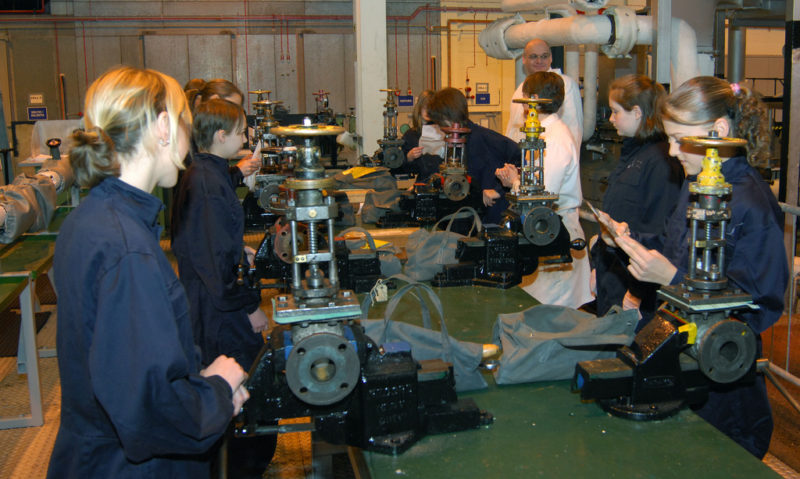Women in Engineering

Almost everything that we do requires some form of engineering. The cars we drive, the houses we live in, and even the pens we use are possible by some kind of design. With so many opportunities, one is tempted to think that the engineering sector would have both genders in almost equal numbers. However, the situation is different as we make up a small portion of this male-dominated profession. In the UK, only nine percent of engineers are women while in China, 40% of the engineers are women. The interpretation is that more women can find engineering roles if only we make a few changes to our systems.
Image courtesy of Argonne National Lab on Flickr
The main reason most of us are not likely to join the engineering workforce is the perception that it is male dominated. Growing up I always wanted to have a profession related to arts, life sciences or medicine because I wanted my life’s work to have positive effects on society at large. As the years went by, I slowly lost hope of achieving this dream. This was not because I could comprehend the design and calculations of the relevant units, but rather because I felt out of place in the related forums. I mean, who would want to be the only female apprentice in an engineering class of thirty.
Then there is the fact that there were very few female faculty members to offer support to female students. In the end, I resorted to taking arts instead of aeronautical engineering, a decision that still haunts me today. This leads me to advocate for the leveling of the playing field so that we can see more women in the profession. In the US,
women engineering students receive support through conferences, communications, webinars and other various tools from the chapters of the Society of Women Engineers found in every region. I believe that if we had such a structure in the UK more women would be encouraged to join the profession, as it would help in alleviating the feeling that they are in the wrong place.
Image courtesy of Wise Campaign on Flickr
Network Rail has moved miles towards this direction by planning to encourage females to consider working in the sector while still young. It is the company’s goal to ensure the thinking that the railway is only for men, ceases to exist. The plan is to have 3000 teenagers from five Milton Keynes’ schools go through a program offering career advice on working on railways by 2018. I believe if more organizations carry out such programs, the nation is on a path towards gender equality in engineering.

